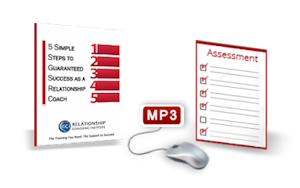 “What can I do when my client is struggling due to lack of self discipline or motivation?”
“What can I do when my client is struggling due to lack of self discipline or motivation?”
1. First, be sure the client is clear and excited about their big picture long term Vision and on board with the goals and action plans you’ve helped them develop for achieving it. If it’s more of a “should” than a strong “want” or desire for your client you should probably revisit and revise the reason the client hired you and their desired outcome. “I should lose weight.” is not the same as “I want to lose weight.” All effective coaching starts from a strong desire.
2. Be sure to boost their motivation, which can ebb and flow. More info here about how to do that.
3. Increase accountability. Turn up the intensity of accountability being sure to follow up on each and every action step and explore strategies with your client to increase accountability such as a daily email text, etc.
4. Don’t forget to “coach” follow through by exploring with your client what they identify would be helpful for them. As a coach you NEVER need to know the answer or solution as you will draw that out of your client using your Coaching Superpower.
5. Be sure to address the big picture of what other priorities and commitments are interfering and making it challenging for the client to follow through. It is always harder to establish a new habit or work on something new than to habitually react to the routine stuff that happens in everyday life.
6. Apply the paradigm of “urgent vs. important” and help expand your client’s awareness that they might be allowing the immediate urgent stuff to interfere with their long term goals and help them strategize how to balance the two- for example, start their day by spending at least 30 minutes on something important for their big picture, long term goal before tackling the urgent stuff that will take up the rest of their available time and energy.
7. Lower expectations. The bar might be set too high for the client and needs to be reset lower and slower. What looks like procrastination can be overwhelm or fear and breaking tasks/actions steps down into baby steps that are easier to accomplish may help.
8. Help your client design a positive reinforcement system. For example, they reward themselves by watching their favorite TV show or a tasty treat, etc. after completing an action step. Desirable edibles and recreational activities can easily be transformed into positive reinforcement events to be earned rather than non-contingent indulgences. To empower your client, it’s important for the CLIENT to design and choose to do this, NOT for the coach to directively impose such a plan.
Stay away from punishment consequences, even if the client suggests that, as punishment isn’t effective. Negative reinforcement can be effective though, which would be avoiding something they don’t want to do, like doing 50 pushups if they don’t make that phone call as planned.
To be clear, here’s the behavior modification options in rank order from most to least effective-
1. Positive Reinforcement- introducing a desired consequence after the desired behavior. (I’ll have ice cream after I finish this task)
2. Negative Reinforcement- removing a negative consequence after the desired behavior. (If I finish this task by 3pm I’ll skip my workout and do something enjoyable)
3. Negative Punishment- removing something desired in the absence of the desired behavior. (If I don’t finish this task I will skip desserts for a week)
4. Positive Punishment- introducing a negative consequence in the absence of the desired behavior. (If I don’t finish this task I will double my workout today)

